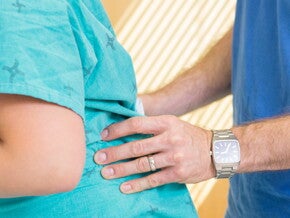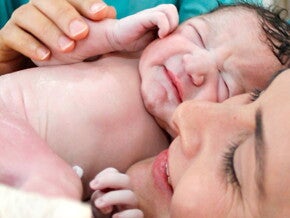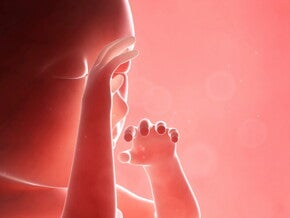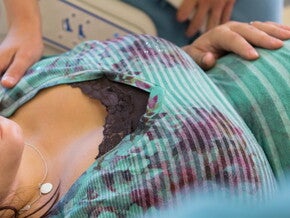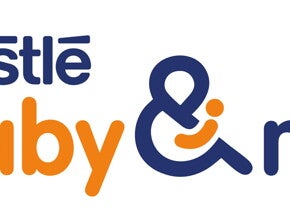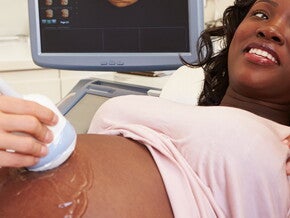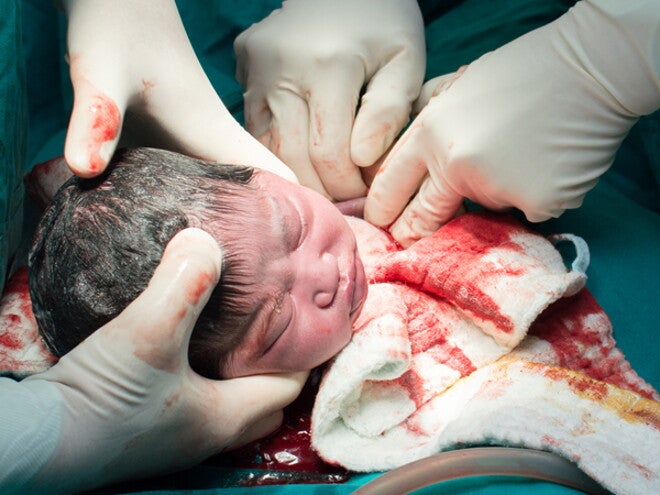
A Caesarean birth is relatively safe and can be a fulfilling birth experience. It is a common method of delivery and you should be fully informed about the procedure. It may be planned for reasons known in advance (elective Caesarean) or the decision may be made during the course of labour (unplanned Caesarean). It may be used for urgent or non-urgent situations.
A Caesarean section is performed when the health and safety of either you or your baby, is being questioned.
Foetal reasons:
- Foetal distress.
- The baby is in an abnormal position – transverse, shoulder presentation or breech. Click here for more information.
- The baby is at risk – small for gestational age as a result of growth retardation.
Maternal reasons
- Cephalopelvic disposition (CPD), where the pelvis is too small for the passage of the baby.
- Placenta praevia low-lying placenta covers, or partially covers, the cervix. As the cervix dilates oxygen to the baby is cut off and maternal haemorrhaging occurs.
- Placenta abruptio premature separation of placenta from the uterus.
- Prolapsed cord the umbilical cord comes down through the vagina, reducing the baby’s oxygen supply.
- Failure of labour to progress, prolonged labour, poor contractions, inadequate dilation of the cervix.
- Previous Caesarean birth, if original reason recurs.
- Toxaemia, diabetes, heart disease, herpes simplex.
- In certain circumstances, an HIV-positive woman may be offered an elective Caesarean section to reduce the risks of HIV transmission to her baby.
Date of elective Caesarean
Special tests can determine the delivery date
- Amniocentesis to determine lung maturity.
- Ultrasound.
- Non-stress and stress tests to measure effects on the baby’s heart rate. To learn more, click here.Discuss these options with your caregiver.
Pre-operative stage or first stage
If you are having an elective Caesarean you may be admitted to the hospital the day before, or on the day of the Caesarean section.
- You will have to sign a consent form for anaesthesia and surgery.
- Your abdomen and pelvic area will be shaved.
- You may be given an enema.
- Remove any make-up, nail polish, jewellery, false teeth, glasses, contact lenses.
- A catheter will be inserted to empty your bladder before surgery. It will be removed after surgery.
- You will have an intravenous drip.
- An atropine(An atropine injection is given before anaesthesia to decrease mucus secretions, such as saliva. During anaesthesia and surgery, atropine is used to help keep the heart beat normal.) injection may be given to dry-up respiratory secretions. This may make you very dry-mouthed.
- You may be expected to not eat or drink 8 hours before the procedure.
If you are having an emergency Caesarean, the same procedures will be performed, if time allows.
Anaesthesia
There are two types of anaesthesia – general or regional. The choice depends on various factors. Your medical history may contra-indicate one type or the other. Your choice, your doctor’s preference, and the time factor can influence the type selected. Most women and their doctors today prefer regional anaesthesia, of which the spinal or epidural are the most common, as this allows women to be awake and participate in the birth. Most doctors encourage partners to be present with regional anaesthesia, but may not with a general anaesthetic.
General anaesthesia
In an emergency, where immediate intervention is required, general anaesthesia may be the method of choice. You will be unconscious during the birth.
Regional anaesthesia – epidural or spinal
Regional anaesthesia allows you to be awake and to participate in your baby’s birth should you need a Caesarean section.
Regional anaesthesia, as the method of choice, will be administered in the theatre about 30 minutes before surgery for an epidural, or five minutes before surgery for spinal analgesia.
Incision
The most popular incision is the transverse or bikini cut, which is just above the pubic bone. Both the skin and the uterine muscle are cut transversely. This type of incision heals quickly and is not visible after your pubic hair re-grows.
- If you have had a previous Caesarean, the incision will be made in the same place.
- A vertical incision in the uterus is very rarely done except in the case of an emergency.
Delivery or second stage with regional anaesthesia
With regional anaesthesia you can hold your baby immediately after birth.
Recovery or third stage
- After the Caesarean you will be transferred to a recovery area where your temperature, blood pressure, incision and vaginal bleeding will be checked.
- If you had a general anaesthetic you may find your throat and neck are sore due to the airway used to administer the anaesthetic.
- After a regional anaesthetic you may feel tingling and pins and needles in your lower body as the anaesthetic wears off.
- If the baby is well, it may be brought to the recovery ward for you to hold and, if you wish, to put to the breast.
- When you are stable, you will be taken to the postnatal ward.
- You will be given a bed bath at first, but once you are up and about you may shower.
- You will be encouraged to get up 12–24 hours postoperatively, which in conjunction with rest, a good diet and plenty of fluids, promotes a quick recovery.
- Your catheter and intravenous drip are usually removed after 24 hours.
- You will graduate to a regular diet after a couple of days.
- You will experience the same physical and emotional changes as a mother who has had a vaginal birth.
- You will also have abdominal pain and possibly shoulder pain. Be sure to use relaxation skills to help you cope.
- The stitches or clips are removed after about a week.
- A Caesarean birth will not affect your ability to breastfeed your baby.
- Ask for assistance and learn as much as you can while in hospital.
- The average stay in hospital, will depend on the mom and baby’s condition after delivery. On average, you may be discharged from 3 to 6 days after the delivery.
- Once home, you will need help with household chores.
Skin-on-skin Caesarean
In a traditional Caesarean, the baby is handed to the midwife, and then to the waiting paediatrician to be examined, tested and checked for weight, etc. This is often done out of the mother’s field of vision.
In a skin-on-skin Caesarean, the baby is covered in a warm towel and immediately placed with the mother under a blanket already prepared on the mother’s chest to keep the baby snugly cocooned. The mother can see, smell, touch, hold and even offer her baby her breast within seconds after the birth. The apgar rating is done on the mother’s chest. The baby warms-up quickly and calms immediately. His flush of colour is faster as his breathing settles and he takes in his new surroundings from the safety of his mother’s body. The baby colonises his mother’s bacteria and warms-up far more quickly than when placed in a cot with a warming device. The father is encouraged to hold his infant to his exposed chest in theatre for the baby to imprint both father and mother.
Where possible, the theatre lights are turned down and the room temperature turned up to warm the operating environment. The newborn’s eyes are shielded so that he can gaze at the faces of his parents without the harsh glare of theatre lights. The father can hold the baby while the mother’s wound is closed and repaired.
For exercises after a Caesarean birth, click here.
Emotions
Having a Caesarean is still giving birth to a baby! Some women feel disappointed at not having had a vaginal birth. Anger and guilt are not uncommon feelings. Talking about your feelings does help. Acceptance comes with time.
Vaginal birth after Caesarean
Vaginal birth after a Caesarean can be safely accomplished by 40–80% of women if there are no recurrent or new indications for a Caesarean. Many doctors allow a “trial of labour” and vaginal birth if progress is normal.
- Discuss your options with your caregiver.

